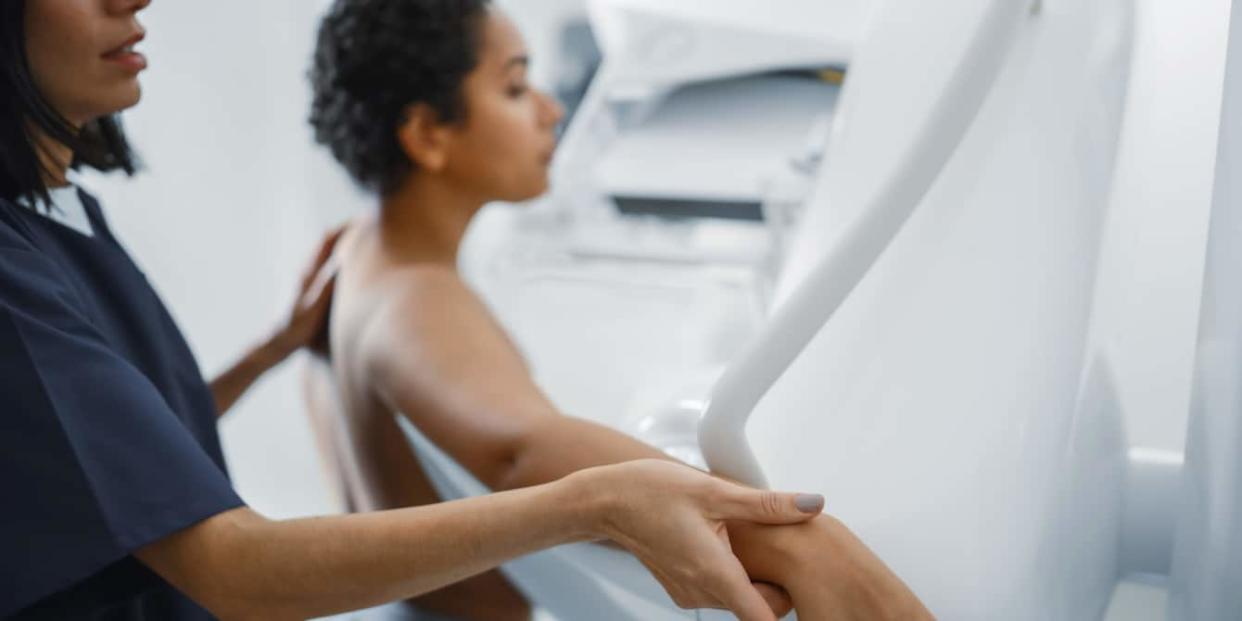Women should start getting mammograms at 40, new guidance says

When it comes to mammograms, 40 is the new 50. That’s according to a newly finalized recommendation released this week from the US Preventive Services Task Force (USPSTF), which has lowered the age for starting mammograms from 50 to 40, which the Task Force authors say could result in 19% more lives being saved. Draft guidance was released in May 2023, but has now been finalized.
When caught early, breast cancer is very treatable, and mammograms can help detect it. However, breast cancer diagnoses among younger women have been increasing, especially among women in their 40s. Rates for that age group have increased by 2% per year between 2015 and 2019, experts say. The disease is still the second leading cause of cancer in women, after skin cancer.
Mammograms at 40 now recommended
Getting a mammogram starting at age 40 every other year is now officially recommended for all women with average risk of breast cancer. (Average risk of breast cancer is considered having no personal history, no strong family history, no BRCA-gene mutation or previous chest radiation before age 30.)
The change in guidance is expected to cover more than 20 million women in the US between the ages of 40 and 49, and may be especially positive for Black women, who are 40% more likely to die of breast cancer than white women.
“There is clear evidence that starting screening every other year at age 40 provides sufficient benefit that we should recommend it for all women in this country to help them live longer and have a better quality of life,” said Dr. John Wong, a primary care clinician at Tufts Medical Center and the director of comparative effectiveness research for the Tufts Clinical Translational Science Institute, to The New York Times.
Related: Katie Couric reveals she was diagnosed with breast cancer after missing a mammogram
A long-awaited alignment in mammogram guidance
On the whole, experts have been championing the news, given that the previous guidelines around mammogram screenings were confusing at best and contradictory at worst. The American Cancer Society guidelines state that women between 40 and 44 should have the option to start screening with a mammogram every year, whereas The American College of Obstetricians and Gynecologists (ACOG) recommends that beginning at the age of 40, women should have a mammogram every 1 to 2 years.
Now, the guidance is more in alignment.
Related: How to talk to kids about cancer treatment at any age
No coverage for additional screenings for those with dense breast tissue
But some are quick to point out that the guidelines didn’t go far enough, stopping short of recommending additional screening for dense breasts, such as ultrasound and MRI. It’s estimated that 45% of women aged 40 and over have dense breasts—a huge percentage of the population.
Katie Couric, who shared her own story of being diagnosed with breast cancer after missing a mammogram last year, has become an outspoken advocate for additional screening. While she heralded the Task Force’s draft guidance last year around lowering the age for regular mammograms, she called out the lack of change on additional screenings for those with dense breasts, who are at a slightly higher risk of developing cancer when using mammography alone. The Task Force ultimately said that there was insufficient evidence to make the recommendation.
“This is an extremely unfortunate decision, because women with dense breasts need additional screening in order to catch breast cancer at its earliest and most treatable stage. With dense breasts, mammograms alone can’t always spot tumors or abnormal tissue. (My breast radiologist likens it to trying to find a snowball against a field of snow),” Couric wrote on her site.
If the task force had recommended additional screening, insurance companies would be required to cover it. But without that official recommendation, insurers do not have to provide that coverage. About half of all women age 40 and older are considered to fall into this higher risk category. Forcing people to pay out of pocket for these expensive additional scans may mean further delayed diagnoses.
Last year, the FDA announced that every state will be required to include an assessment of breast density in all mammography reports starting in 2024 (previously, just 38 states required doctors to inform their patients if they have dense breasts), what many women will be able to do with that information remains limited.
Related: What to say when your friend has breast cancer
A version of this story was originally published on May 10. 2023. It has been updated.

